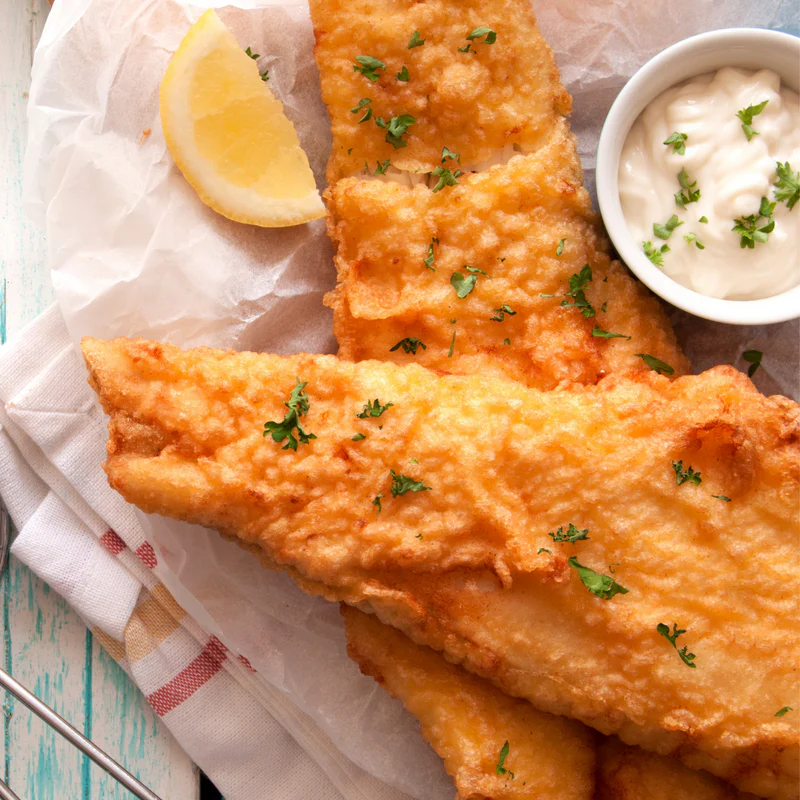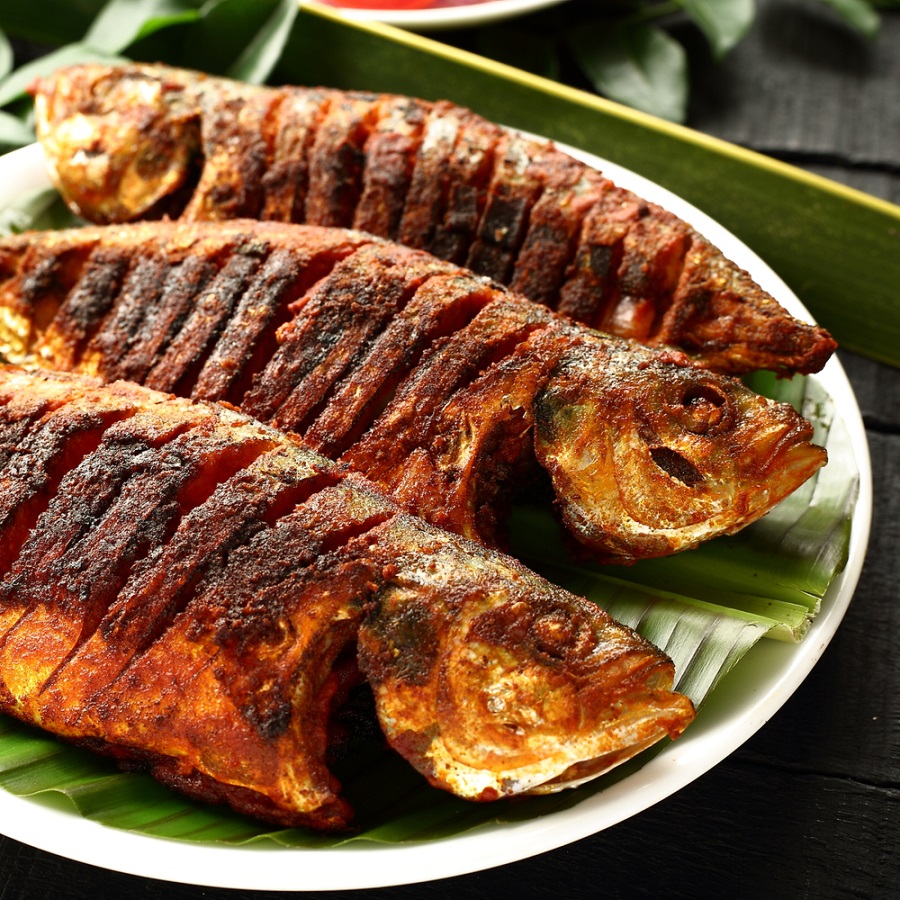
Choosing the Ideal Oil for Your Next Fish Fry
Most Popular Fish Varieties for Frying
Choosing the right fish is key for a delicious fry-up.The best oil for fry fish depends on taste and health goals.
Crappie, bluegill, and walleye top favorites among anglers. These fish offer a mild flavor and firm texture when fried.
Catfish and bass, especially from colder waters, are also popular for their unique tastes.
Other good options include haddock, Alaskan cod, and tilapia. These varieties are readily available and fry well.
For stronger-flavored fish like trout or salmon, choose a robust batter. This will help balance the fish’s potent taste.
Selecting the Right Oil: Smoke Points and Health Considerations
When frying fish, the oil’s smoke point and health factors are important. Choose oils wisely for the best outcome.
Understanding Smoke Points
A high smoke point means the oil can handle more heat before it starts to smoke. For frying fish, aim for oils with a smoke point above 375°F.
Health Aspects of Frying Oils
Consider oils rich in good fats like monounsaturated and polyunsaturated. They are better for health than saturated fats.
Balance Omega Fatty Acids
Choosing oils with a good balance of omega-3 and omega-6 fatty acids can support overall health.
Avoid Overheating Oil
Heating oil beyond its smoke point is a no-go. It spoils flavor and releases harmful compounds.

Peanut Oil: A Top Choice for Frying Fish
- High Smoke Point: Peanut oil has a smoke point of 450°F (232°C). This is ideal for keeping your frying temperature consistent without risking the oil smoking and spoiling the flavor of the fish.
- Neutral Flavor: It doesn’t overpower the taste of your fish. You get to enjoy the fish’s natural flavor with just a hint of nuttiness.
- Health Benefits: Peanut oil has healthy fats, like monounsaturated and polyunsaturated fats. These may be a better choice for your heart.
- Texture: With its high smoke point, peanut oil can fry fish quickly. This creates a crispy exterior while keeping the inside moist and tender.
Remember to use refined peanut oil to lessen allergy concerns. Always check that your guests don’t have peanut allergies before serving.
Before you start frying, heat the peanut oil to the perfect temp. Use a thermometer to check it stays between 375°F and 400°F. This will help avoid soggy or overly oily fish. Lastly, don’t forget to let the fried fish drain on a rack for a crispy, non-greasy result.

Vegetable Oils: Pros and Cons for Fish Frying
When frying fish, the choice of oil is key. Vegetable oils, like canola, soybean, and corn oil, are common choices. They have a high smoke point, which makes them suitable for frying without smoking too early.
Pros of Using Vegetable Oils
- High Smoke Point: Most vegetable oils can withstand high temperatures. This is crucial for maintaining the right frying conditions.
- Neutral Flavor: These oils don’t overpower the fish’s natural taste. This allows the flavor of the fish to shine through.
- Availability: These oils are easily available in most stores. This makes them a convenient option for many cooks.
Cons of Using Vegetable Oils
- Omega Fatty Acids: Some oils, like corn and soybean, are high in omega-6 fatty acids. These can promote inflammation if consumed in excess.
- Processing: Often, vegetable oils are heavily processed. This might concern those looking for more natural cooking ingredients.
For those who fry fish regularly, it’s vital to choose an oil that complements the fish without the drawbacks. It’s also important to balance your oil use with considerations for health and flavor.
How to Achieve the Perfect Fry: Temperature and Techniques
Achieving the perfect fry is all about precision and technique. Here are the crucial steps to ensure your fish is crispy and delicious every time.
- Preheat Oil to the Right Temperature: Aim for an oil temperature between 375°F and 400°F. This range is optimal for a golden exterior without undercooking the inside.
- Use a Thermometer: Always use a reliable thermometer. This ensures your oil is at the correct temperature before you start.
- Avoid Overcrowding: Frying too many pieces at once can lower the oil’s temperature. This leads to soggy, greasy fish. Fry in small batches for the best results.
- Proper Draining: After frying, let the fish drain on a rack or paper towels. This prevents a greasy feel and keeps the crust crispy.
- Adjusting Temperature: If the oil cools down after adding fish, increase the heat slightly. Maintaining a steady temperature is key.
- Safe Frying Techniques: Use long tongs or a frying spider to safely place and remove fish from the oil. This prevents splashing and burns.
- Timely Flipping: Gently flip the fish once during frying. This ensures an even crust on both sides.
By following these simple yet effective techniques, you’ll achieve that perfect fish fry more consistently, delighting your taste buds and your guests alike.

The Role of Batter in Fish Frying
Choosing the right batter is essential for delicious fried fish. Different types of batter can significantly affect both taste and texture. Here are key points to consider when selecting a batter for frying fish.
- Beer Batter: This batter involves mixing flour with beer, which adds a lighter, airy texture to the fish. The type of beer matters; lighter beers like Kolsch are perfect for milder fish, while darker beers suit strong-flavored fish.
- Flour Dredge: Ideal for a crispier outcome, flour dredge simply involves coating the fish in flour. Seasonings can be added to the flour to enhance flavor.
- Bread Crumbs: Coating fish in bread crumbs provides a unique flavor and a crunchy texture. Panko crumbs are popular for an extra crunch, though they can brown quickly.
- Combination Coatings: Sometimes, combining techniques, like using both flour and breadcrumbs, achieves the best results. Experimenting can lead to discovering perfect textures and flavors for your preference.
Ultimately, the choice of batter boils down to personal taste and the type of fish being cooked. Whether aiming for light and crispy or rich and crunchy, the right batter makes all the difference. Happy frying!

Serving Suggestions for Your Fried Fish Feast
Once your fish has been perfectly fried using the best oil, the next step is to serve it in a way that highlights its crispy texture and delicate flavor. Here are some top serving suggestions for an unforgettable fish fry feast:
- Classic Sides: Pair your fried fish with traditional sides like coleslaw, fries, or hush puppies. These classic combinations are always a hit.
- Fresh Lemon Wedges: Don’t forget to offer fresh lemon wedges. A light squeeze of lemon can enhance the fish’s natural flavors.
- Homemade Tartar Sauce: Whip up a simple tartar sauce with mayonnaise, pickles, and a dash of lemon. This creamy dip complements the crunchy fish wonderfully.
- Malt Vinegar: For those who enjoy a tangy touch, offer malt vinegar on the side. It’s a favorite in British-style fish and chips.
- Healthy Greens: Serve a fresh green salad with a light vinaigrette to balance out the richness of the fried fish.
- Warm Cornbread: Offer warm, buttered cornbread as a comforting side that pairs excellently with the crispy fish.
- Vegetable Medley: Include a mix of steamed or roasted vegetables as a colorful and nutritious option.
- Keep It Simple: Sometimes, the best way to enjoy fried fish is on a simple platter. This lets the fish shine as the star of the meal.
By providing a variety of sides and condiments, you ensure that each guest can customize their plate to their tastes. Whether the preference is for classic complementary flavors or a lighter, healthier side, there’s something for everyone at your fish fry feast. Enjoy your deliciously fried fish with the perfect accompaniments for a memorable meal!
How to Properly Fry Fish
Frying fish requires specific techniques to achieve the best results. Firstly, the oil temperature should be monitored closely. Use a thermometer to ensure the oil is adequately heated. Additionally, frying in batches can help maintain proper temperature.
Moreover, do not overcrowd the pan. Overcrowding reduces oil temperature, leading to soggy fish. Instead, allow enough space for each piece. This promotes even cooking and perfect crispiness. Finally, draining fried fish on paper towels absorbs excess oil, enhancing texture.

Storing and Reusing Frying Oil
After frying, oil can be reused, but proper storage is crucial. Allow the oil to cool completely before handling. The best oil for fry fish depends on taste and health goals.Then, strain it through a fine mesh sieve or cheesecloth. This removes food particles and prolongs oil life.
Store the oil in a clean, dry container. Keeping it in a dark, cool place prevents rancidity. Used oil has a limited shelf life, so odor and appearance checks are necessary. If oil smells off or looks cloudy, it shouldn’t be reused.
Conclusion: Choosing the Best Oil for Frying Fish
Ultimately, the best oil for frying fish depends on taste and health goals. High smoke point oils, such as canola, vegetable, or peanut oil are popular choices. However, consider the unique flavors that each oil brings to the dish. This addition can elevate the final product to new heights.
When frying fish, remember to account for type and thickness. The method of preparation can also impact oil selection. Frying fish balances health, flavor, and technique. A well-chosen oil will create a delectable dining experience. Adventures in frying await those who dare to explore different oils. Happy frying!

